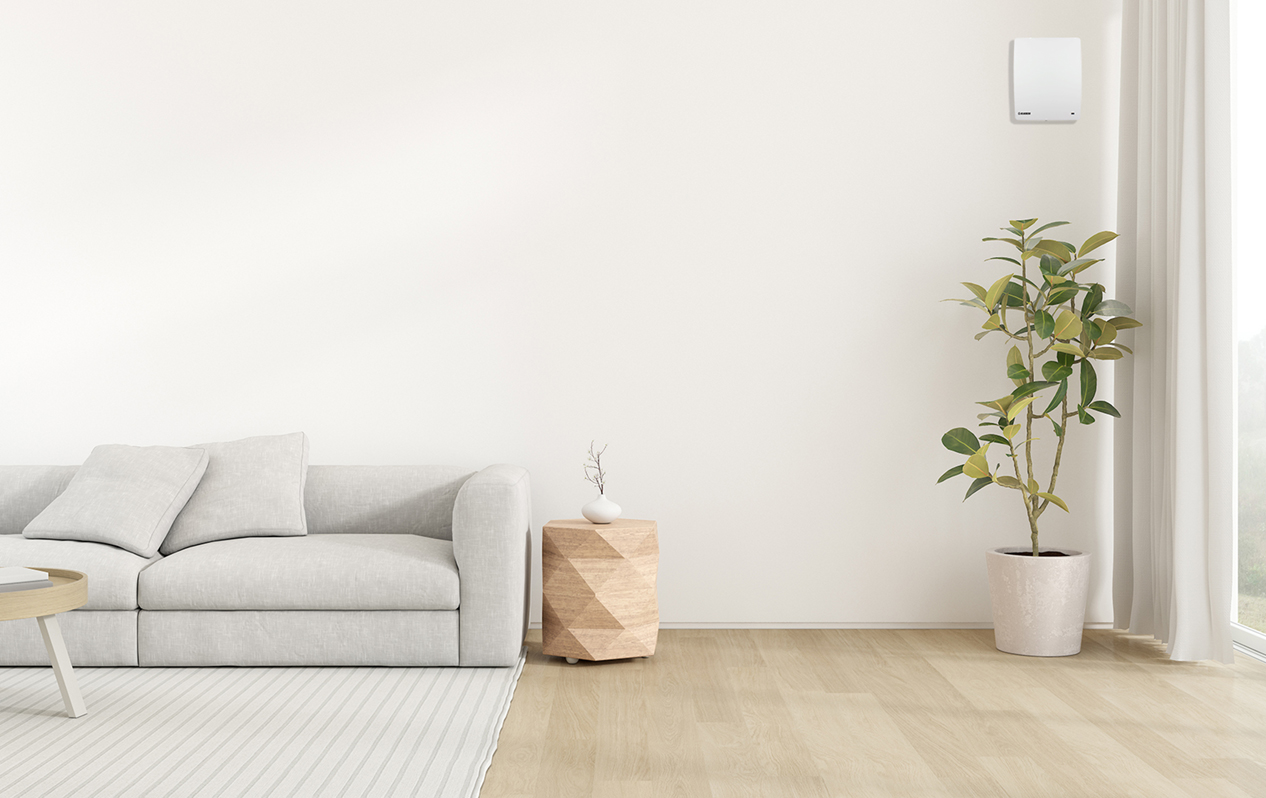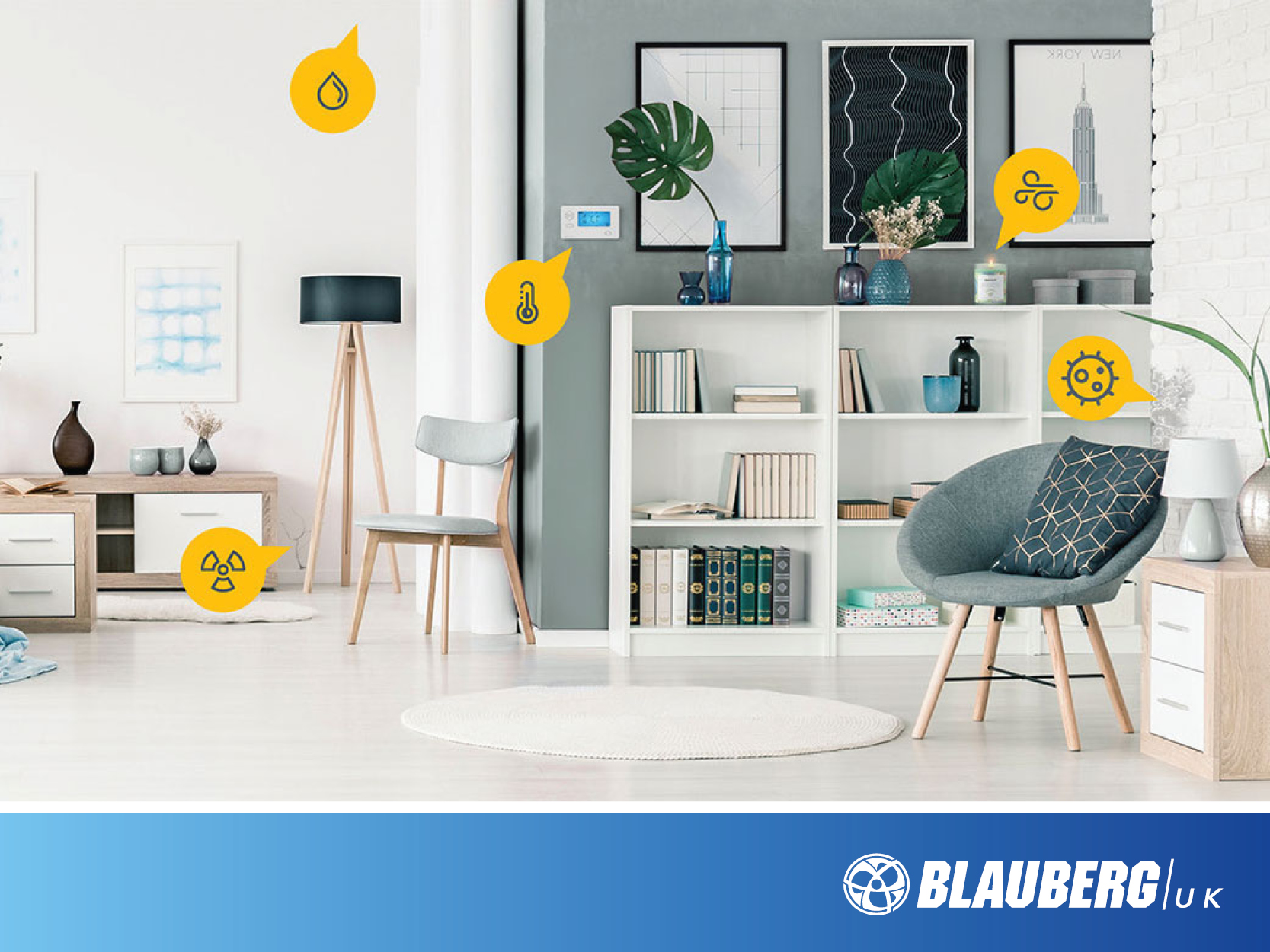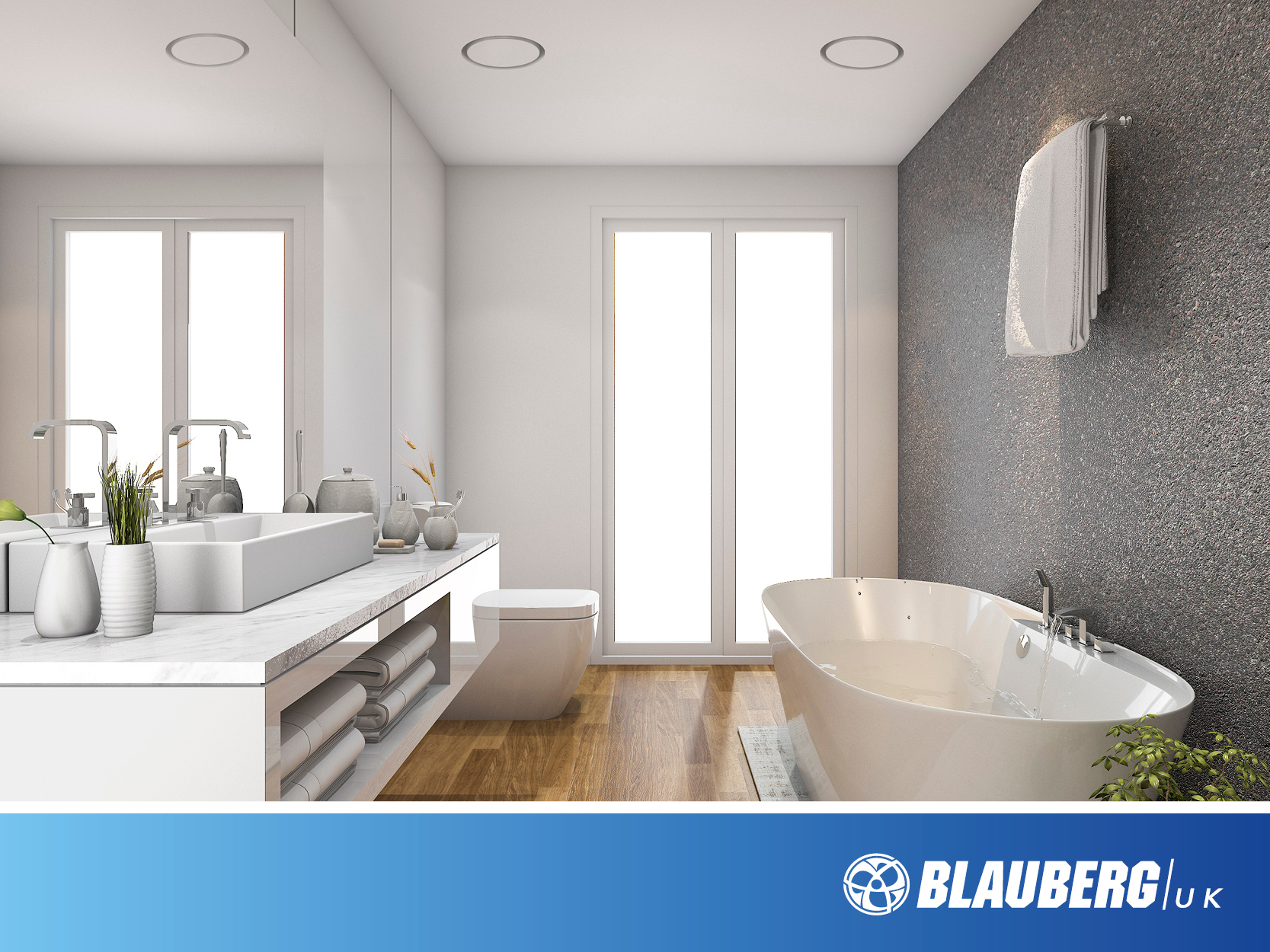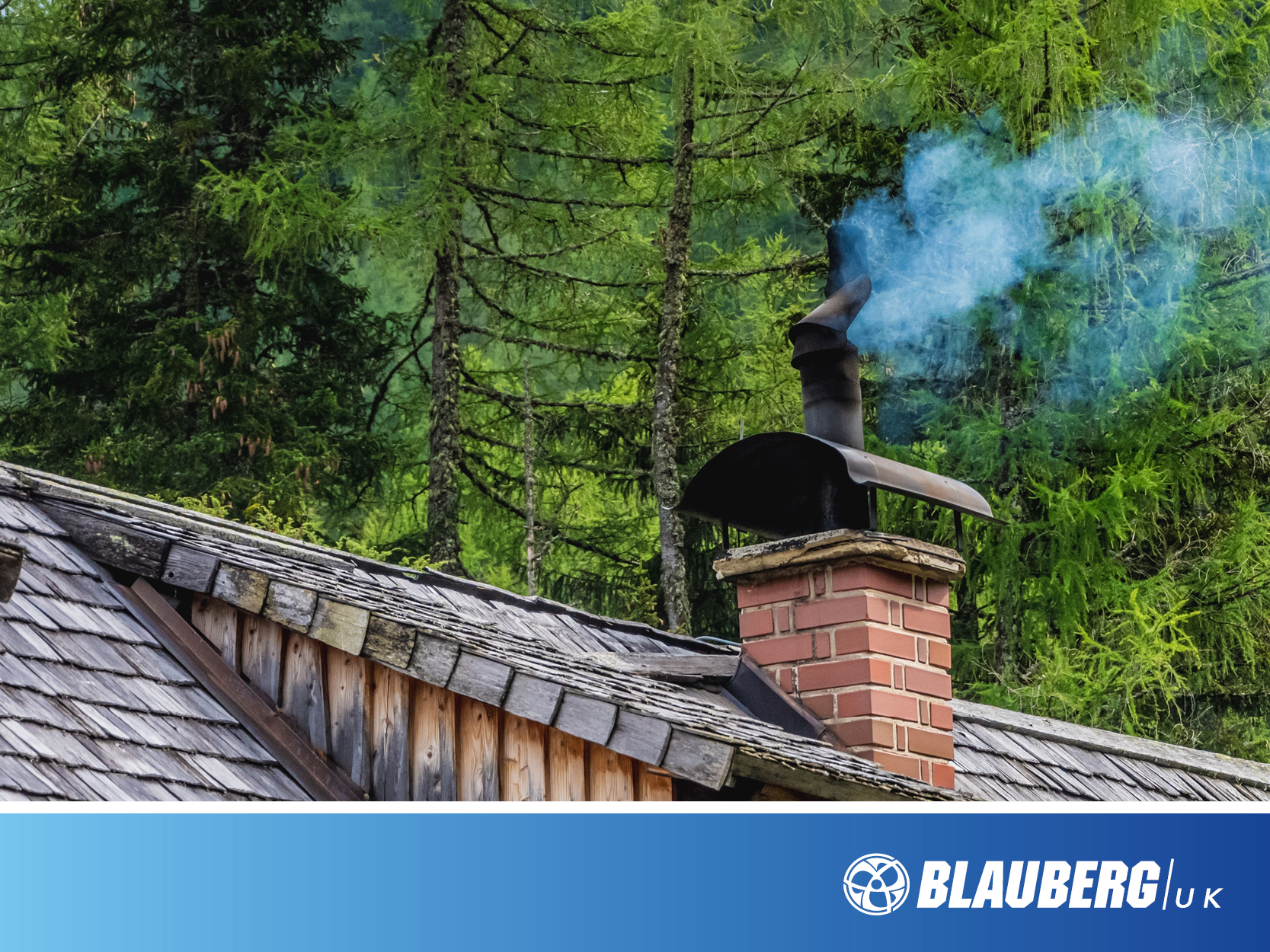Top 10 Bathroom Extractor Fan Questions Answered
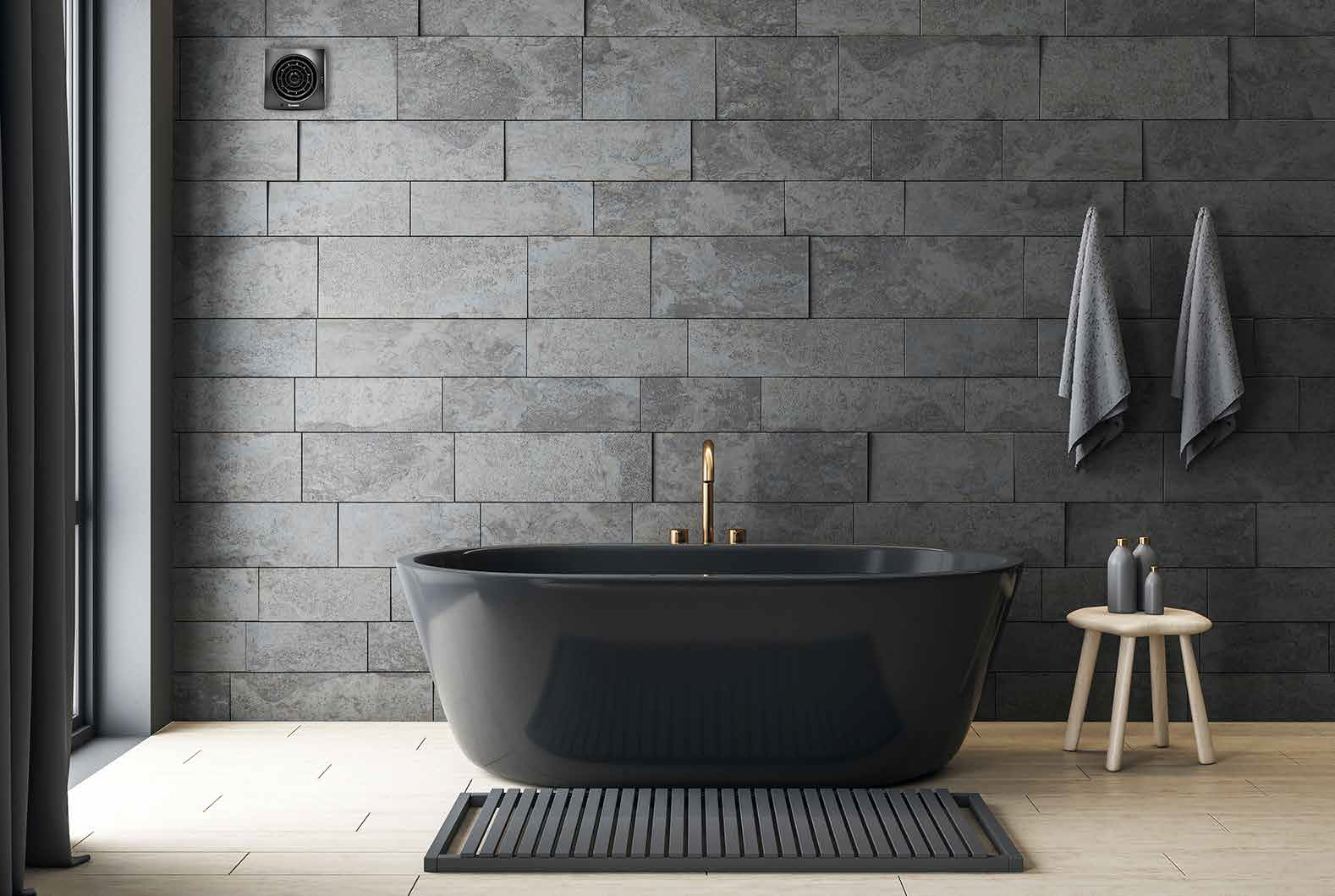
Top 10 Questions Our Customers Ask About Bathroom Extractor Fans
When it comes to maintaining a healthy and comfortable bathroom environment, a bathroom extractor fan plays a pivotal role. Its function is not only to remove excess moisture but also to eliminate mold, making it an essential component of any bathroom. Below, we've answered a list of the top 10 questions our customers frequently ask about bathroom extractor fans.
1. What is the main purpose of a bathroom extractor fan?
The primary purpose of a bathroom extractor fan is to remove excess moisture and odours from the air. This function is essential for preventing mold growth, reducing humidity levels, and maintaining good air quality, which benefits both the health of the occupants and the structural integrity of the bathroom.
Moreover, the significance of bathroom extractor fans extends into compliance with specific parts of the Building Regulations (specifically Parts F, L & O), ensuring that buildings are safe, energy-efficient and provide a comfortable living environment.
2. How do I know what size extractor fan I need for my bathroom?
When it comes to ensuring your bathroom remains well-ventilated and free from damp and mold, choosing the right size extractor fan is crucial. Below, we break down the process into three key areas to help you make an informed decision.
General Pointers - Before diving into specifics, it’s essential to understand a few general guidelines. Firstly, calculate the volume of your bathroom (length x width x height) to know the size of space you’re dealing with. Secondly, consider how your bathroom is used: frequent showers or baths increase moisture levels, possibly necessitating a more powerful fan. Lastly, think about the ducting path - longer ducts with bends might require a fan with a higher extraction rate to be effective.
Building Regulation Requirements: The UK Building Regulations, specifically Part F, provide clear guidelines on ventilation requirements. For bathrooms, an extraction rate of at least 15 litres per second (l/s) is the standard for intermittent fans. These regulations ensure that your extractor fan meets the minimum requirements for health, safety, and comfort. It is important to stay updated with these regulations or consult a professional to ensure compliance.
3. What are 'The Bathroom Zones' and how do they relate to bathroom extractor fans?
Understanding bathroom zones is vital for selecting the right extractor fan. The bathroom is divided into zones (0, 1, 2, and outside zones), based on proximity to water sources like showers and baths.
Bathroom Zone 0: The inside of the bath, or the inside of the shower that can physically hold or contain water. Electrical items installed into these areas must be low voltage, SELV (Safety Extra Low Voltage - no higher than 12V), and rated no lower than IPX7.
Bathroom Zone 1: The area directly above zone 0, is limited to a height of 2.25m above the bath or shower. Electrical items installed in this area must have an IP rating of IPX5. Items installed into zone 1 can be mains voltage, but if so must be fitted to a 30ma RCD. Low voltage items can also be installed in this area, but the transformer must be located outside of zone 2.
Bathroom Zone 2: This is the zone beyond zones 0 and 1, continuing 0.6m horizontally and up to 2.25m vertically. As with zone 1, mains voltage items must be fitted to an RCD, and low voltage items transformers must be installed outside of zone 2. IPX4 or higher protection is required. Wash Basins are classified as being in zone 2.
Bathroom Zone 3: Any lighting or extractor fan can be installed in this area, as it does not need an IP rating. Apart from shavers and toothbrushes though, no portable electrical equipment is allowed in this area.
Which bathroom extractor fan do we recommend?
Blauberg Calm 100 stands out as the preferred choice by electricians for Bathroom Zone 1 installations. They combine low noise, energy efficiency, and safety with their IPX5 rating.
We must remind you that all electrical works must be carried out by a fully qualified and registered professional electrician.
4. How often should I clean my bathroom extractor fan?
To maintain optimal performance and ensure your bathroom remains well-ventilated and moisture-free, aim to clean your bathroom extractor fan monthly. However, this largely depends on usage.
Make sure you disconnect the electrical power supply before starting, and keep safe!
This process typically includes detaching the cover and gently using a soft brush or vacuum to clear away any accumulated dust and debris from the fan blades and motor. Regular upkeep like this helps keep the fan running smoothly, contributing to a healthier and more comfortable bathroom environment.
5. Are bathroom extractor fans noisy?
When it comes to creating a comfortable and relaxing bathroom, every detail counts — including the sound of your bathroom extractor fan. In our busy lives, the bathroom often serves as a personal sanctuary for relaxation and rejuvenation. Therefore, ensuring that every aspect of this space contributes to a serene environment is essential. This includes choosing an extractor fan that effectively manages moisture and odours without disrupting the peace.
Understanding the Importance of Noise Levels: The noise level of an extractor fan is measured in decibels (dB). A difference of just a few decibels can significantly affect the fan's perceived volume. Fans that operate quietly, typically ranging from 25 dB(A) to 30 dB(A), help maintain the tranquility of your bathroom space. Especially for bathrooms neighbouring bedrooms or other quiet areas, opting for a fan with lower noise levels is crucial to avoid disturbances.
For a better understanding of noise levels, please see the below chart highlighting various noise levels in dB(A), offering a comparison of their perceived loudness alongside everyday sound examples to help gauge the potential noise output of bathroom extractor fans.
Recommended Bathroom Extractor Fan Noise Levels
| Noise Level (dB(A)) | Perceived Level | Common Sound Example |
|---|---|---|
| 10 dB(A) | Very quiet | Leaves rustling, quiet whisper |
| 20 dB(A) | Quiet | Whispering conversation |
| 30 dB(A) | Soft | Quiet library, soft background music |
| 40 dB(A) | Moderate | Residential area without car traffic |
| 50 dB(A) | Moderate | Quiet conversation, moderate rainfall |
Balancing Efficiency and Quiet Operation: Modern technology has paved the way for extractor fans that don’t compromise efficiency for quietness. These fans can powerfully ventilate your bathroom, removing moisture and preventing mold, all while operating almost silently. When selecting a fan, aim for a model that provides this balance, ensuring a comfortable bathroom environment both in air quality and sound level.
Considerations for Fan Placement and Installation: The location of your fan and how it's installed can also influence noise. Wall or window-mounted fans might be perceived as quieter compared to ceiling-mounted units, partly due to their distance from the user. Additionally, ensuring that your fan is installed correctly can prevent unnecessary noise caused by vibrations. Consulting with a professional for the installation can make a significant difference in the fan's performance and noise level.
What do we suggest? For optimal balance between effective ventilation and maintaining a quiet, peaceful bathroom environment, a bathroom extractor fan with a noise level of around 30 dB(A) is ideal. This level ensures the fan is quiet enough to be unobtrusive, while still providing sufficient airflow to manage humidity and odours effectively.
Which bathroom extractor fan do we recommend? Blauberg Calm 100 stands out as a good choice down to its low noise and 'all-round' suitability.
6. How energy-efficient are bathroom extractor fans?
When you're looking to make your home more energy efficient, starting with something as simple as your bathroom extractor fan can make a big difference. The guidelines set by Part L of The Building Regulations are all about making sure your fan doesn't use more energy than it really needs to, keeping your bills down, and helping the environment at the same time.
Part L of The Building Regulations says your fan should use less than 0.5 watts for every litre of air it moves every second. Confused? Imagine if each litre of air were a balloon. For every balloon of air your fan moves, it should use less energy than what it takes to power a small LED light bulb.
Lets use the example of a fan rating of 9 watts and an airflow capacity of 25 l/s (litres per second). We find it's quite efficient – its Specific Fan Power (SFP) is 0.36 w/l/s. This is just a fancy way of saying it uses less energy than allowed to do its job well, making it a great choice for your bathroom.
Recommended Bathroom Extractor Fan Energy Rating
| Specification | Value |
|---|---|
| Fan Power | 9 watts |
| Fan Airflow | 25 l/s (90 m3/hour) |
| SFP (Specific Fan Power) | 0.36 w/l/s |
Choosing a fan that meets these requirements means you're not only following the rules but also making a choice that's good for your wallet and the planet. It's about making sure you're breathing clean air in your bathroom without wasting energy. And when we talk about energy efficiency, it's not just about saving money (though that's a big part!) – it's also about taking care of our environment by using less power and reducing our carbon footprint.
Remember, it's all about making informed choices that benefit not just you but also the world around you. By selecting a bathroom extractor fan that aligns with Part L's energy-efficient standards, you're doing just that.
7. Can a bathroom extractor fan improve indoor air quality?
Yes, by removing moisture and odours, a bathroom extractor fan can significantly improve the air quality in your bathroom, contributing to a healthier indoor environment.
In the UK, the challenge of mold is more than just a matter of home maintenance; it's a significant health concern. The damp climate frequently leads to conditions where mold can thrive, potentially affecting the well-being of residents. This is especially true for individuals with allergies, asthma, or weakened immune systems, for whom mold exposure can exacerbate health issues.
Understanding the critical role of maintaining a healthy living environment, bathroom extractor fans emerge as unsung heroes in our homes. They do much more than just prevent the bathroom mirror from fogging up; they actively combat the moisture that mold needs to grow. By effectively reducing humidity levels in our bathrooms, these fans are instrumental in keeping the air in our homes fresh and healthy.
Recognising the importance of this issue, UK Building Regulations have set standards to ensure homes are equipped to deal with moisture efficiently. These guidelines aren't just about compliance; they're about ensuring our homes are safe, comfortable places to live.
Focusing on the heart of the matter – the health and comfort of home occupants – it's clear that a simple step like installing or maintaining a bathroom extractor fan can have a profound impact. It’s about putting people's well-being first, creating homes that not only shelter us physically but also support our health and happiness.
8. Should the extractor fan run all the time?
The official description of a bathroom extractor fan according to Part F of The Building Regulations is an "Intermittent Fan". So, by definition, it's not designed to run continuously. Instead, they're meant to operate when needed, such as during and after showers or baths, to remove excess moisture and odours from the air.
However, for bathrooms without opening windows, the installed extractor fan should include a run-on timer. This feature ensures that the fan continues to operate for a minimum of 15 minutes after the bathroom has been vacated. The purpose of this is to ensure that any residual humidity or odours are adequately cleared out, enhancing the bathroom's overall air quality, and helping prevent mold and mildew growth.
The guidance provided by Part F of The Building Regulations highlights the importance of having a ventilation strategy that balances energy efficiency with maintaining good indoor air quality, especially in bathrooms without windows.
9. How should I control my bathroom extractor fan?
When considering how to control your bathroom extractor fan, it's important to think about what works best for you and your household. Here’s a breakdown of control options for your bathroom extractor fan, tailored to different wiring setups in your home, all with a focus on simplicity, safety and personalisation.
When deciding on the best way to control your bathroom extractor fan, think about your daily routine, your family’s needs and how you use your bathroom. Whether you prefer the tactile feedback of a pull cord, the automated convenience of a sensor, or the futuristic control of a smart system, your choice should make your life easier and your home more comfortable.
How do I Control My Bathroom Extractor Fan?
| Wiring Requirement | Control Option | User-Focused Benefits |
|---|---|---|
|
2 Wires (Live & Neutral) This wiring option can generally be taken from your home lighting circuit, ring main, or separate electrical supply. Always consult with an NIC EIC registered electrician before attempting any electrical work. |
Bathroom extractor fan fitted with built-in pull cord. | Direct control within the bathroom. Simple on/off manual operation. |
| Bathroom extractor fan without any controls. | Wire to an existing or new switch external to the fan. | |
| Bathroom extractor fan fitted with a motion sensor (PIR.) | Fan with automatically switch on when movement is detected. A Blauberg fan fitted with this option will also come with an adjustable run-on timer. | |
| Bathroom extractor fans with wifi. Connect to a virtual assistant (Alexa or Google Play etc). | Modern convenience, smartphone or voice control. | |
3 Wires (Live, Switched Live, and Neutral) This wiring option can generally be taken from your home lighting circuit or separate electrical supply. Always consult with an NIC EIC registered electrician before attempting any electrical work. |
Bathroom extractor fan with built-in run-on timer. | Fan will continue to run-on after the switch (or light switch) has been turned off. (All Blauberg extractor fans fitted with this option will be internally adjustable from 2 - 30 mins.) |
| Bathroom extractor fan fitted with a humidity sensor. | Automatically switched on when higher levels of humidity are detected. (All Blauberg extractor fans fitted with this option will be internally adjustable from 50 - 90% relative humidity). Run-on timer functionality is also included. | |
| Bathroom extractor fans with wifi. Connect to a virtual assistant (Alexa or Google Play etc). | Modern convenience, smartphone or voice control with the addition of activation by a separate switch. |
Remember, the goal is to create a bathroom environment that feels right for you, enhancing both comfort and functionality while keeping energy efficiency in mind. Don't hesitate to reach out to a professional for advice on installation or to ensure your setup meets all safety standards and building regulations. Your bathroom is a personal space, and how you manage it should reflect your unique needs and preferences.
10. Can I install and wire a bathroom extractor fan myself?
Choose Wisely: Ensure you hire an electrical contractor who prioritises your safety and quality of work. Look for professionals registered with reputable organisations like NICEIC, who are known for their standards and expertise.
Buy Smart: When purchasing electrical appliances, especially for areas like the bathroom, opt for reputable retailers, and whenever possible, specialists in bathroom fittings. This approach guarantees the quality and suitability of products for your specific needs.
Safety in Selection: Make sure every electrical item you use in the bathroom, from lighting fixtures to appliances and even cables, are designed for such environments. The right products ensure your bathroom is not only functional but also a safe space.
DIY Risks: While the temptation to do it yourself is real, electrical installations, especially in sensitive areas like bathrooms, require professional handling. It's crucial to avoid DIY to prevent risks and ensure installations are done safely and correctly.
Underestimating Ventilation: Never underestimate the importance of a good extractor fan. Proper ventilation is essential in bathrooms to manage humidity and prevent mold, contributing to a healthier environment.
Any Electrician Won't Do: It's not just about finding an electrician; it's about finding the right one. Choosing a contractor registered with NICEIC or similar organisations ensures that the electrical work in your home meets safety standards and regulations, protecting you and your family.
To finish
In summary, the choice and maintenance of a bathroom extractor fan are crucial for ensuring a healthy, comfortable, and energy-efficient environment in one of the most intimate spaces of your home.
From selecting the right size and type based on bathroom zones and usage to understanding the importance of regular cleaning and noise levels, every aspect plays a significant role in enhancing your bathroom's air quality and overall comfort.
By prioritising these factors and opting for a professional installation, you can ensure that your bathroom remains a refreshing space for years to come, perfectly balancing functionality with environmental consciousness.


